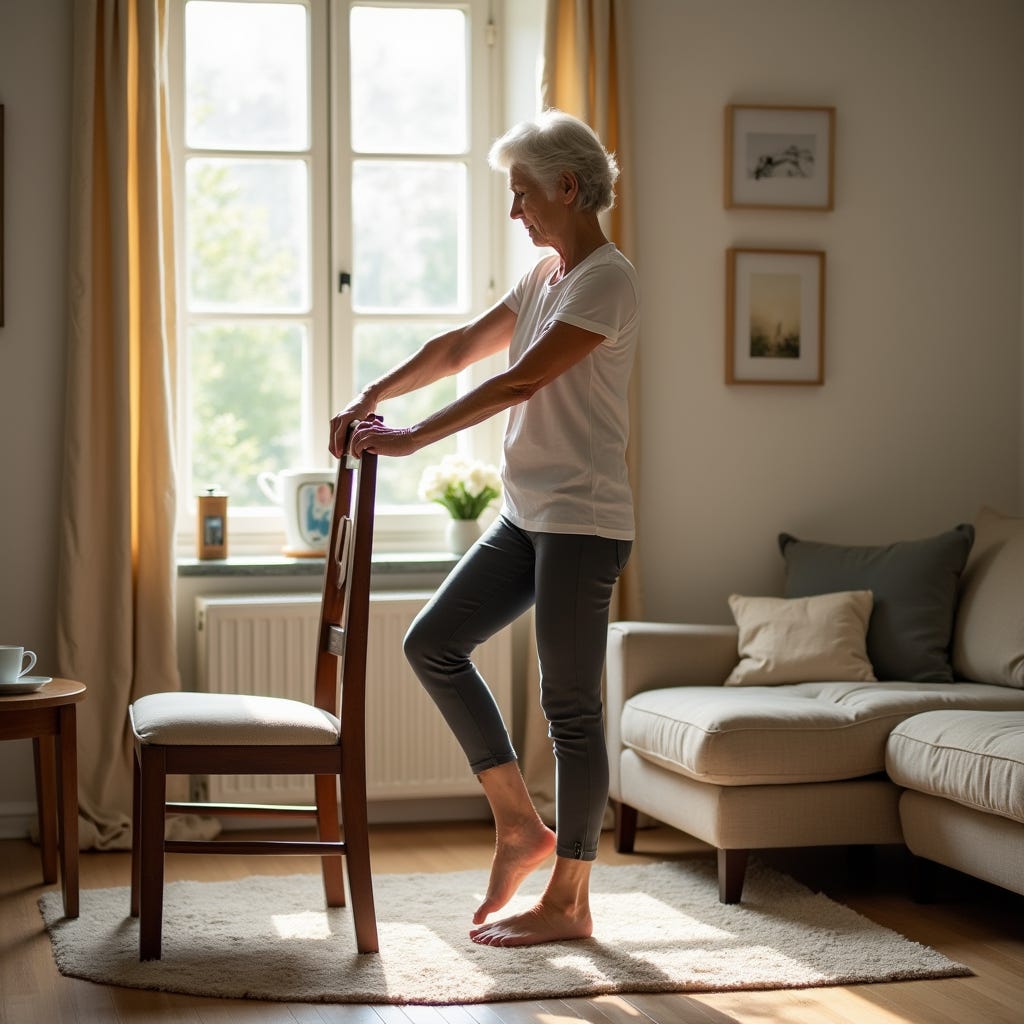Why Your Ankles Might Be the Key to Better Balance
Weak ankles are often overlooked but they directly affect your balance. Here’s how to strengthen them safely.
Margaret had always considered herself fairly steady on her feet. She took walks, did yoga on occasion, and avoided anything she deemed “too wobbly”.
But over the last few months, she’d noticed something: she was hesitating. Just for a second. At the curb, on stairs, even stepping into the shower.
“I thought I was just being cautious,” she said. “But then I almost toppled trying to reach the top pantry shelf.”
It wasn’t her knees or her hips. It was her ankles, quietly weakening behind the scenes.
Many seniors focus on core strength or upper leg muscles to improve balance, and those are important. But your ankles? They’re like the ground crew of your stability system. If they’re not strong, flexible, and responsive, your balance won’t be either
What Your Ankles Do for You
Every time you take a step, your ankles spring into action. They absorb impact, adjust to the surface beneath you, and help your body react when things shift unexpectedly, like stepping on a pebble, a loose rug, or an uneven sidewalk.
Ankles are responsible for something called “proprioception”, which is your body’s ability to know where it is in space. That means:
Sensing if you’re tipping
Reacting quickly to avoid a fall
Making those tiny muscle corrections to stay upright
When your ankles are strong and flexible, they quietly handle all of that without you noticing. But when they weaken, you may feel:
Wobbly or unsure on your feet
Slower to respond when you stumble
Less confident stepping up or down
Is It My Ankles? Here’s What to Look For
It’s not always obvious that your ankles are the culprit. Here are some signs they need attention:
1. You shuffle instead of stepping
That might mean your ankles aren’t bending well enough to allow a natural stride.
2. Turning corners throws you off
If quick turns make you unsteady, your ankles may lack the flexibility or reaction speed to adjust smoothly.
3. Slippers slide off your feet
Weak ankle muscles can’t keep shoes in place. This may seem minor, but it can signal overall instability.
4. You avoid walking on grass or gravel
These surfaces demand more ankle control. Avoidance often signals decreased confidence in your feet.
Gentle Exercises to Wake Up Your Ankles
You don’t need to push hard or sweat buckets. What your ankles need is consistent, low-impact movement that reminds them how to support you.
1. Ankle Circles (Simple and Soothing)
Sit with your feet off the ground and slowly draw circles in the air with your toes.
Do 10 in each direction, on each foot.
Breathe deeply while you do it.
This improves ankle mobility and joint awareness, like oiling a squeaky hinge.
2. Heel-to-Toe Rocking
While standing (hold a counter if needed):
Rock forward onto the balls of your feet (lift your heels)
Then rock back onto your heels (lift your toes)
Do 10–15 reps slowly.
3. Towel Grab & Scrunch
Place a small towel on the floor and try to pull it toward you using only your toes.
Repeat 5–10 times.
Switch feet.
4. Single-Leg Stands
Hold onto a chair and lift one foot slightly off the floor.
Hold for 10–15 seconds, then switch sides.
Try a few rounds.
Bonus Tip: Use Your Ankles Throughout the Day
These exercises don’t need to be a “routine.” You can sneak ankle work into your everyday life:
Stand on one foot while brushing your teeth
Do heel raises while waiting for the microwave
Wiggle your ankles during commercial breaks
Even a few minutes a day can make a difference.
Margaret’s New Morning Habit
After her pantry wobble, Margaret added ankle circles and toe scrunches to her morning routine. “It takes five minutes while my tea steeps,” she said. “I didn’t expect much, but now I feel more solid walking around the house.”
And she’s gone back to the grocery store alone, something she’d quietly stopped doing months ago.
The Role of Footwear: It’s Bigger Than You Think
You could be doing all the right exercises, but if your shoes aren’t supporting your ankles, it’s like planting flowers in cracked pots.
Look for:
Firm heel cups (to keep your foot from sliding)
Arch support (to align your ankle)
Non-slip soles (especially indoors)
Snug fit around the ankle (no loose slippers!)
Skip these:
Flip-flops, backless slip-ons, and shoes with uneven wear all force your ankles to work harder in unsafe ways.
Don’t Wait for a Fall to Pay Attention
Ankles often decline slowly and silently. That’s why they’re easy to overlook until something scary happens.
Instead of waiting for a wake-up call, consider ankle care a quiet form of self-respect. Strong ankles mean:
More freedom to go where you want
Less fear of steps or uneven ground
Greater ability to catch yourself if you trip
Caregiver Corner
Noticing some hesitation in your parents or partner’s steps? Here's how to gently help:
1. Suggest “foot warmups” instead of “ankle workouts.”
This sounds friendlier and feels like less of a chore.
2. Turn it into a shared routine
Do heel raises together at the kitchen counter. Add light conversation to keep it fun.
3. Watch the footwear
Loose, floppy shoes are ankle hazards. Help them shop for supportive, stable footwear with good tread, even for inside the house.



Thank you for this information! I am going to add these exercises to my daily routine.
So important. I had a fall stepping down from a curb and badly sprained my right ankle. A very slow recovery. Thank you for sharing this vital material.